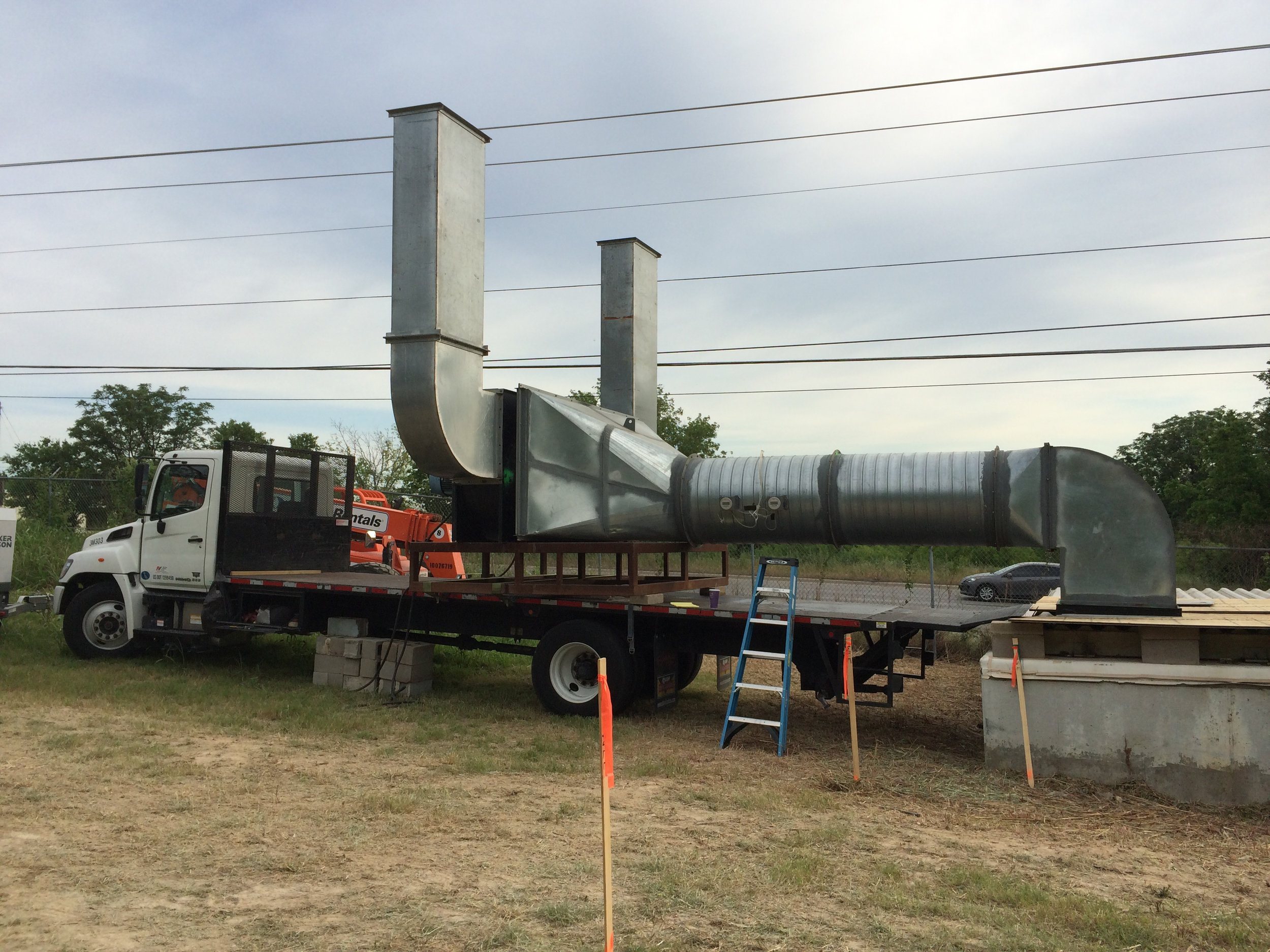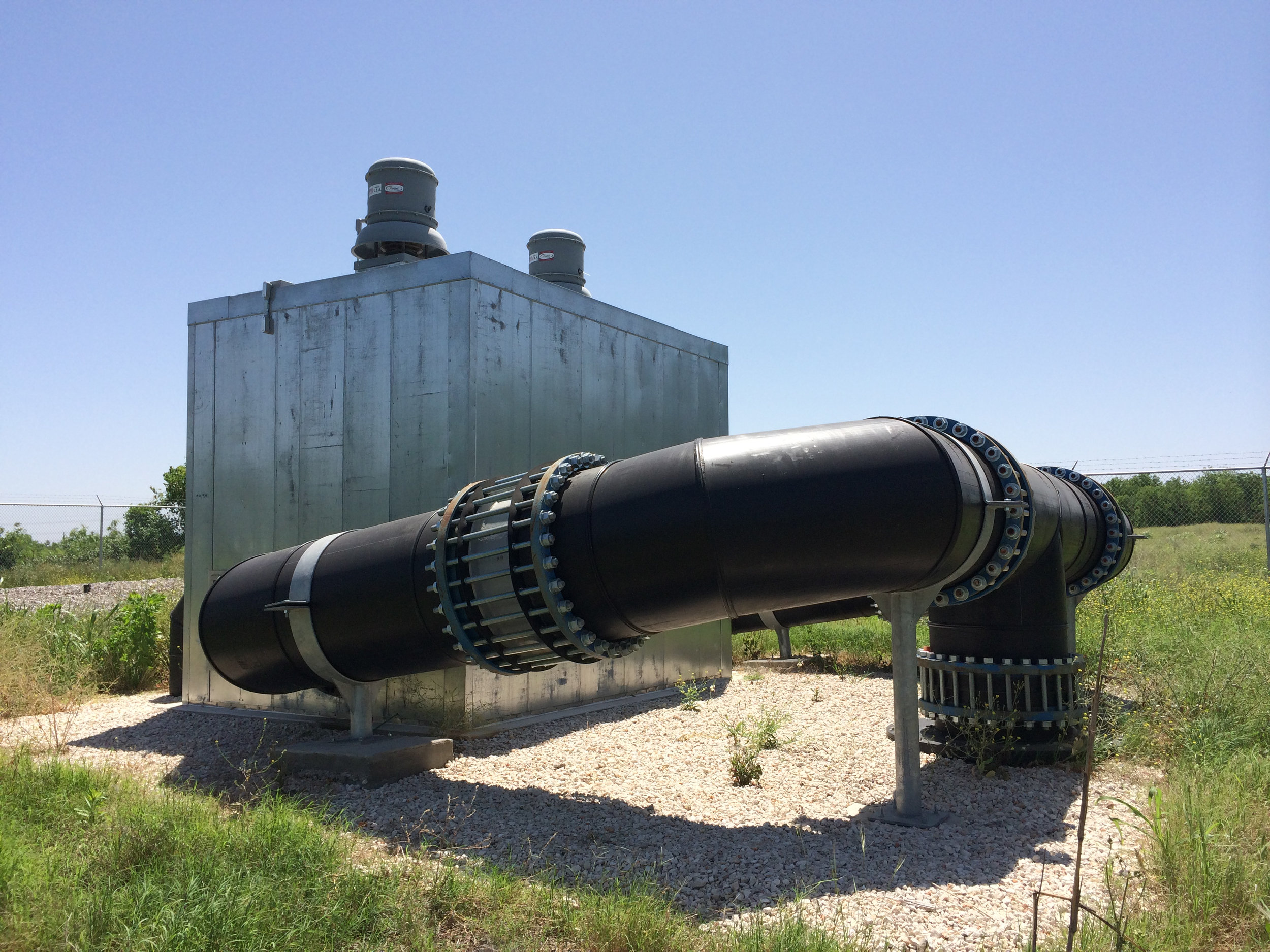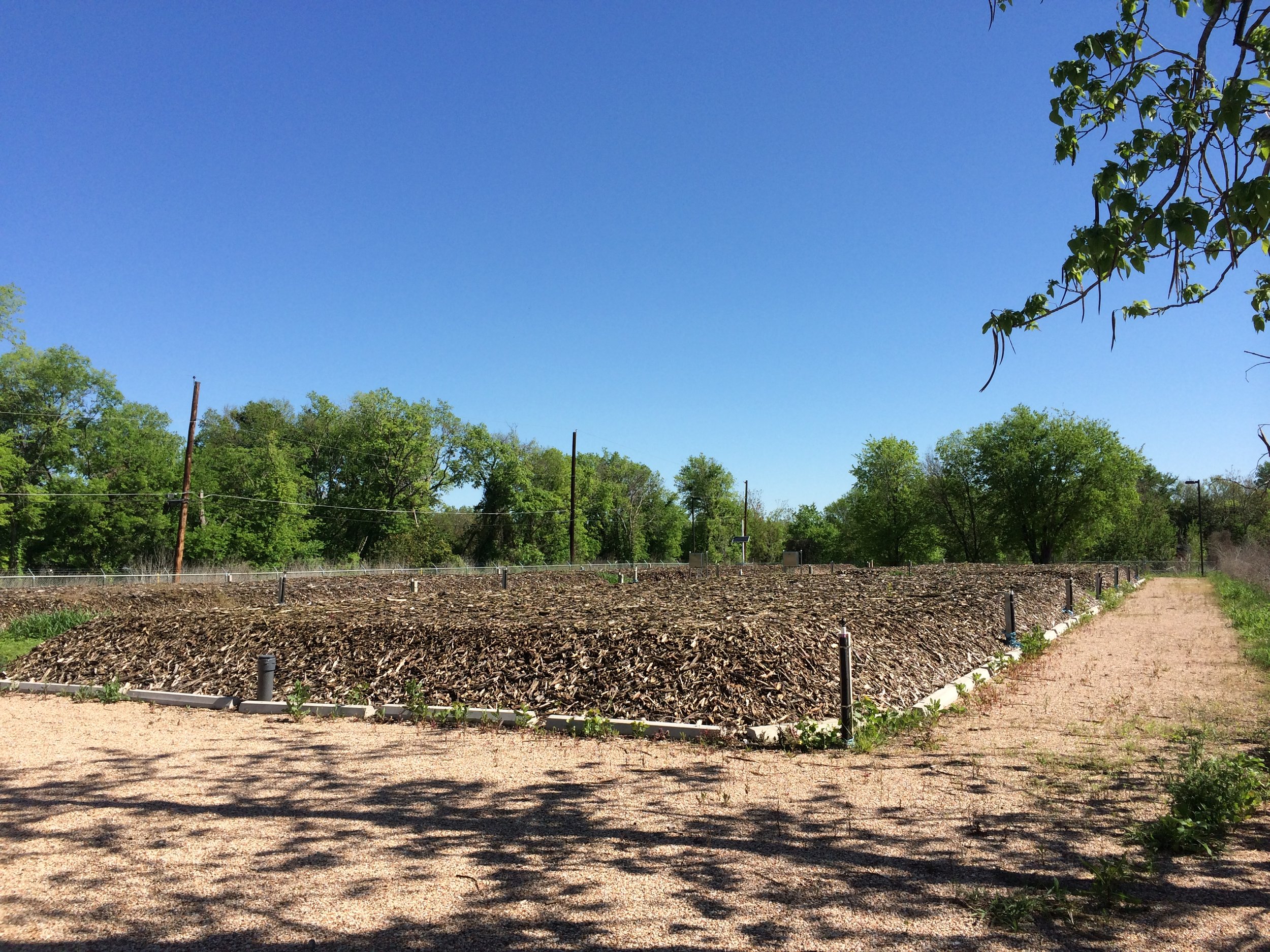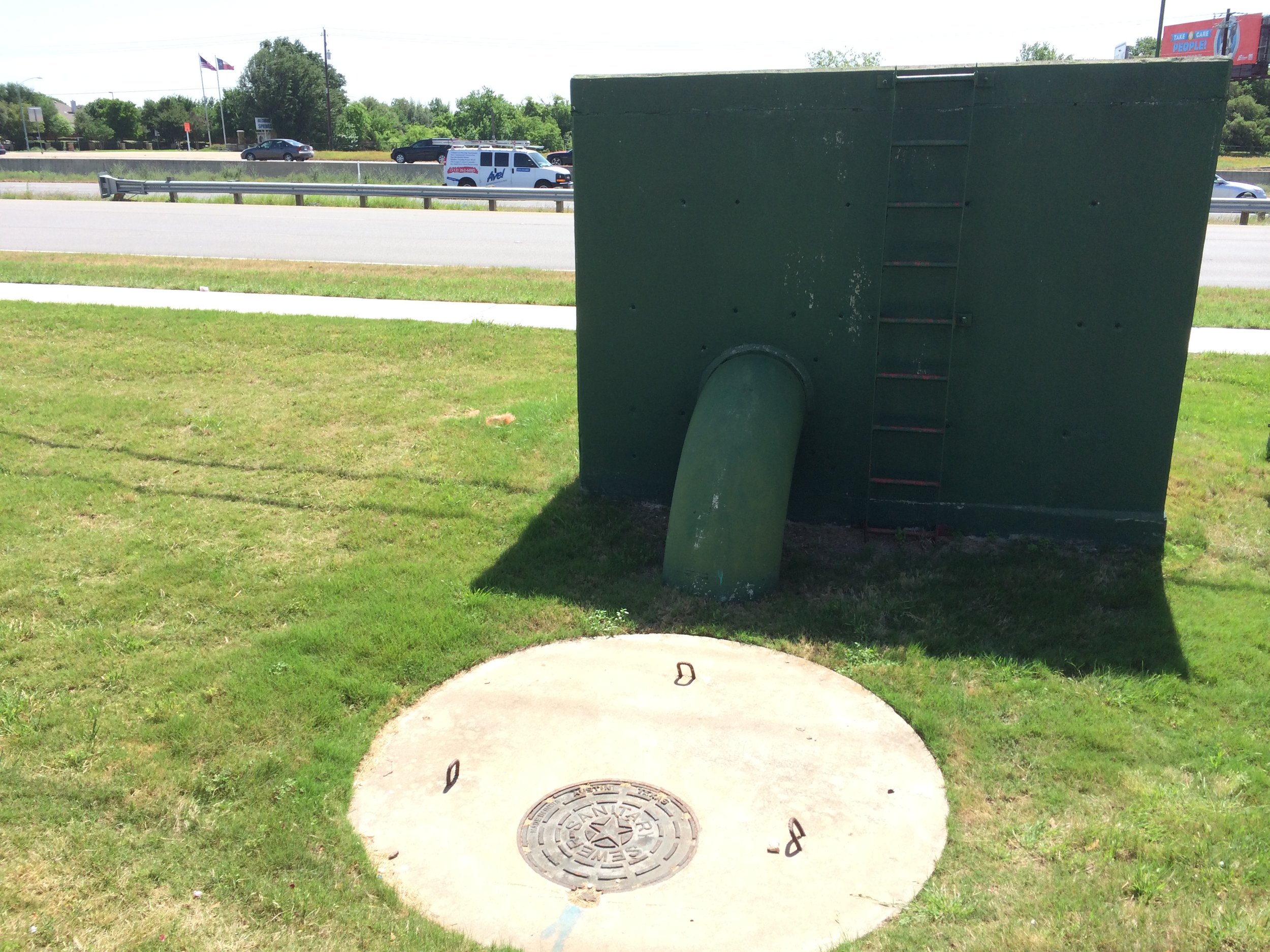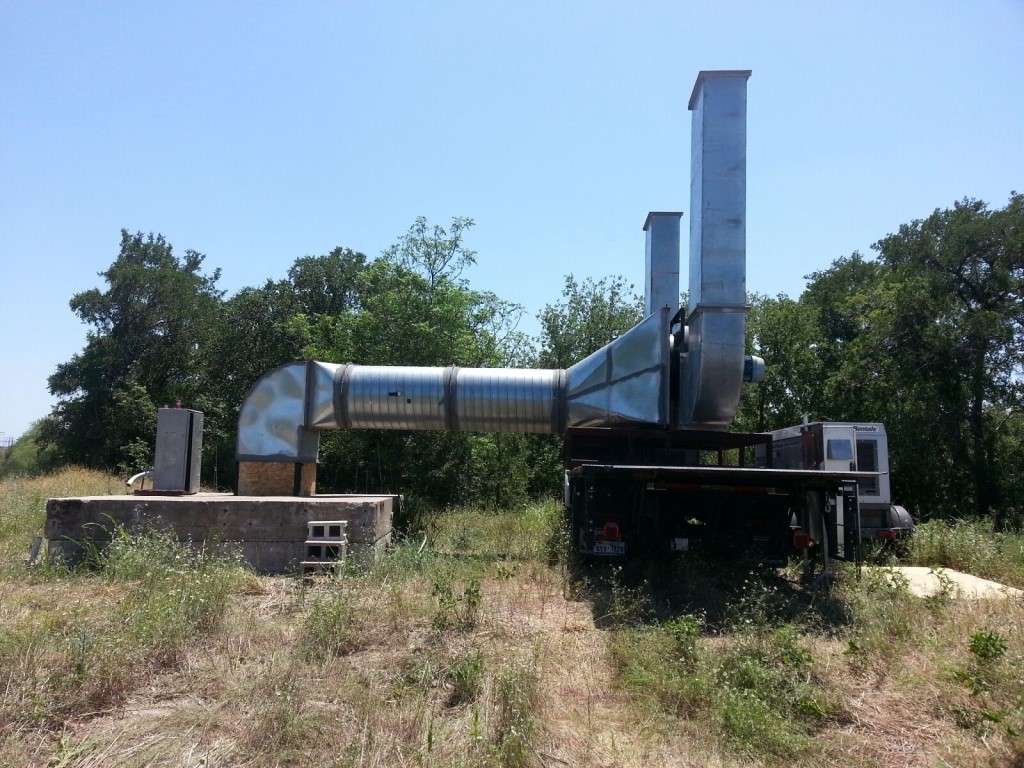The City of Austin experienced odor complaints associated with the Crosstown Tunnel and the Onion Creek Interceptor. Both tunnels are large diameter tunnels with headspace restrictions at the downstream end.
Fan Testing
Large diameter tunnels are notorious for causing sewer pressurization because of the potential to drag large volumes of air down the sewer with the flow. If the air cannot be accepted by the downstream sewer or the treatment plant, it will pressurize and be forced out.
The Crosstown Tunnel is an 84-inch and 96-inch diameter sewer that terminates at the Walnut Creek Wastewater Treatment Plant (WWTP). The CT receives flows from the 60-inch Bull Creek Interceptor (BCI) and the 36-inch and 48-inch West Bull Creek Interceptor (WBCI) in northwest Austin. The CT enters a junction box (Walnut Creek Siphon Inlet) where the 72-inch Lower Walnut Creek Interceptor (LWCI) connects from the north. The combined CT and LWCI wastewater then flows from the junction box, through an inverted siphon into the Walnut Creek WWTP. Although the inverted siphon has a 30-inch air jumper duct into the plant, it appears to be undersized and cannot convey all of the air. The excess air pressurizes the junction box, both tunnels and other connecting sewers in the immediate area. During fan testing of the CT at this location the 30-inch air jumper was manually closed off to prevent air short-circuiting and represent the true operating condition for a future odor control facility.
The Onion Creek Interceptor (OCI) is an 84-inch diameter sewer tunnel that starts at the abandoned Williamson Creek WWTP and terminates at the South Austin Regional (SAR) WWTP. Upstream of the Williamson Creek WWTP site there are several other smaller diameter tributary sewers including the 30-inch Sunset Valley Interceptor, 30-inch North Williamson Interceptor, and the 48-inch, and 54-inch Slaughter Creek Interceptor. Due to the nature of the SAR plant operation, the lower portion of the OCI is mostly submerged at all times. The headspace restriction at the downstream end near the SAR WWTP prevents air from flowing through, thus pressurizing the upstream sewers.
The City of Austin investigated the feasibility of installing vapor phase odor control facilities (OCF) to depressurize these tunnels and to prevent potential odor release. V&A determined suitable locations for installing the proposed OCF and to determine the most effective OCF airflow volume to depressurize the tunnels. Four sites were identified and 12-hour fan tests were performed. The results of the Fan Testing were used to recommend a treatment technology and conceptually design an OCF.


